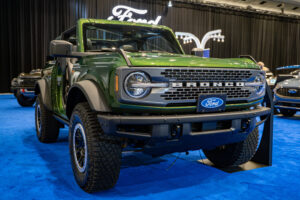MuscleCar Builds
Want more content like this?
Join the PowerNation Email NewsletterParts Used In This Episode
Auto Body Color & Supply Co.
Primer and sealers, Rust Defender.
Metalcraft Tools
The English Wheel is shaped like a large "C". There is a large 9" x 3" wheel with a flat working surface mounted at the top. There is a smaller 3" x 3" wheel mounted at the bottom with a curved working surface.
Tennsmith
Tennsmith's slip rolls combine precision-turned, ground and polished high carbon steel rolls with heavy-duty, cast iron end frames and a welded steel base to make an accurate and durable forming tool.

























